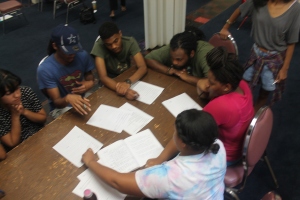

History repeats itself. It’s almost hard to perceive how much truth can be found behind such a simple phrase. Nevertheless, mainly in regards to the similarities between the Black Codes and New York’s Stop & Frisk program, there couldn’t be any more truth.
The Black Codes began in Washington, D.C. in 1808, with Southern states passing their own legislation following the Civil War in 1865. Some historians say that the Black Codes were as bad, if not worst, than slavery itself, and there are good reasons why.
The Black Codes restricted the right of African-Americans to own property (which includes buying and leasing land), conduct business and deprived them of the freedom of movement, a constitutional right.
For example, there were certain places throughout the South that prohibited African-Americans to be in a town after a certain time without special permission from his employers. And the punishment if such laws were ever ignored? Often times numerous days of public work and a fine that, in the 1860s, could prove rather difficult to pay.
In Washington, D.C., for example, blacks were not allowed were not allowed to be on the streets of the city after 10 p.m. If this law was ever violated, free blacks could be fined up to five dollars, as enslaved African-Americans had to have their owners pay the fine, with the punishment for not meeting the fines being a whipping. These laws were worsened with the new set of laws in 1812, as blacks could be fined for twenty dollars with the punishment for not paying being six months in jail.
However, it was not solely limited to the freedom of movement for African-Americans, as they were also unable to live in a town unless they worked for a white employer, they were not permitted to preach to congregations of black people unless given special permission from the local legal authority, nor were they able to carry any sort of weapon on them for defense.
Such were the limits of African-Americans over 150 years ago, which is part of the reason why so many find it so difficult to come to terms with the fact that such laws are still in place today, albeit in a slightly modified form.
Arguably the closest set of laws to those of the Black Codes are those of New York’s stop-question-and-frisk program. The New York stop-question-and-frisk program allows New York Police Department officers to stop and question someone the officer believes may have committed, is committing, or is about to commit a crime. What’s more is that if the officer ever feels physically endangered, he or she is allowed to frisk, or search, the suspect for possible weapons.
Based on the United States Supreme Court decision in the Terry v. Ohio case of 1968, the stop-question-and-frisk program regularly sees in excess of 500,000 people stopped, with the numbers from 2011 reading a startling 684,000 having been stopped.
While there have been upsides to this program, such as suspects who actually were criminals having been apprehended, the subject of racial profiling hovers above the program like a dark storm cloud; the majority of people stopped are either African-American or Latino.
But what does this have to do with the Black Codes? What does a program designed with the intention of stopping crimes before they happen have to do with a one hundred and fifty year old racist policy?
To find the answer, one must put the denial of the freedom of movement laws of the Black Codes into a modern context. Blacks were not permitted to walk through a town at a certain time without special permission from their employers. Today, African-Americans in New York City have a 55% chance of being stopped while walking through certain parts of the city at a certain time; 87% of people stopped by the program in 2012 were either Black or Latino.
What does all of this prove?
It proves that though we — Americans — may pride ourselves in our promotion of democracy and freedom, we are far from such a claim. Is a nation really free when 13% of its citizens live in unacceptable conditions and are constantly the subject of racial profiling by authorities? Is a nation really the greatest nation on earth when the police officers, the same people who’s very job descriptions are to ‘serve and protect’ the American people, target a specific group of people? Is a nation really a home for financial prosperity when 39.8% of African-Americans live on welfare?
Is a nation really a place for a fresh start, when African-Americans have been held down for nearly five centuries? I beg to differ, but then again it’s been the same way for 138 years.











